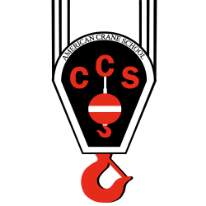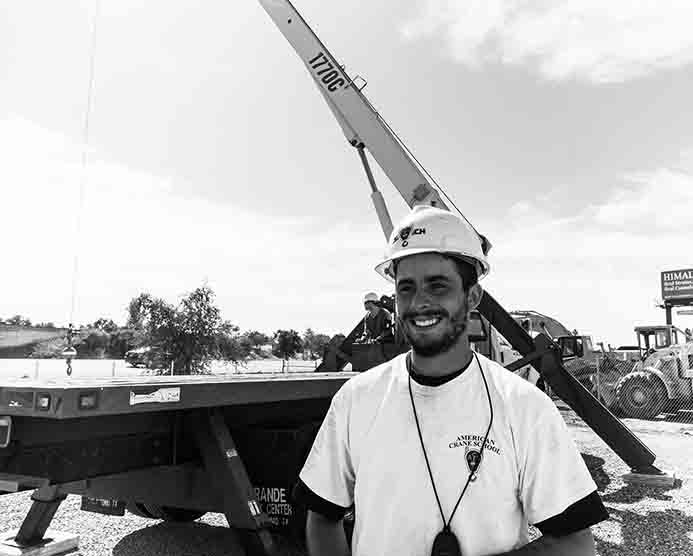-
The NCCCO written exams are broken up into four primary categories. These categories consist of general technical knowledge, site information, operations, and use of load charts.
-
The California Crane School crane operator certification course prepares students to pass their written exams through our three day course. With some of the highest pass rates in the country, we are confident we can get you from a novice to a knowledgeable crane operator.
- 1. The functions and limitations of the crane and attachments
2. Wire rope:- -Background information necessary to understand the inspection and removal from service criteria in § 1926.1413 and § 1926.1414
- -Capacity and when multi-part rope is needed
- -Relationship between line pull and safe working load
- -How to determine the manufacturer’s recommended rope for the crane
3. Rigging devices and their use, such as:- -Slings
- -Spreaders
- -Lifting beams
- -Wire rope fittings, such as clips, shackles, and wedge sockets
- -Saddles (softeners)
- -Clamps (beams)
4. The technical limitations of protective measures against electrical hazards:- -Grounding
- -Proximity warning devices
- -Insulated links
- -Boom cages
- -Proximity to electric power lines, radii, and microwave structures
5. The effects of load share and load transfer in multi-crane lifts
6. Basic crane terms
7. The basics of machine power flow systems- -Mechanical
- -Electrical
- -Pneumatic
- -Hydraulic
- -Combination
8. The significance of the instruments and gauge readings
9. The effects of thermal expansion and contraction in hydraulic cylinders
10. Background information necessary to understand the requirements of preoperation and inspection
11. How to use the safety devices and operational aids required under § 1926.1415 and § 1926.1416
12. The difference between duty-cycle and lifting operations
13. How to calculate net capacity for every possible configuration of the equipment using the manufacturer’s load chart
14. How to use manufacturer-approved attachments and their effect on the equipment
15. How to obtain dimensions, weight, and center of gravity of the load
16. The effects of dynamic loading from:- -Wind
- -Stopping and starting
- -Impact loading
- -Moving with the load
17. The effect of side loading
18. The principles of backward stability
19. How to identify the suitability of the supporting ground/surface to support the expected loads of the operation.- Elements include:
- -Weaknesses below the surface (such as voids, tanks, loose fill)
- -Weaknesses on the surface (such as retaining walls, slopes, excavations, depressions)
20. Proper use of mats, blocking/cribbing, outriggers, stabilizers, or crawlers
21. Identification of site hazards such as power lines, piping, and traffic
22. How to review operation plans with supervisors and other workers (such as the signal person)
23. How to determine if there is adequate room for extension of crawlers or outriggers/stabilizers and counterweights
24. How to pick, carry, swing and place the load smoothly and safely on rubber tires and on outriggers/stabilizers or crawlers (where applicable)
25. How to communicate at the site with supervisors, the crew, and the signal person
26. Proper procedures and methods of reeving wire ropes and methods of reeving multiple-part lines and selecting the proper load block and/or ball
27. How to react to changes in conditions that affect the safe operation of the equipment
28. How to shut down and secure the equipment properly when leaving it unattended
29. Know how to apply the manufacturer’s specifications for operating in various weather conditions, and understand how environmental conditions affect the safe operation of the equipment
30. How to properly level the equipment
31. How to verify the weight of the load and rigging prior to initiating the lift
32. How to determine where the load is to be picked up and placed and how to verify the radii
33. Know basic rigging procedures
34. How to carry out the shift inspection required in this subpart
35. Know that the following operations require specific procedures and skill levels:- -Multi-crane lifts
- -Clamshell/dragline operations
- Pile driving and extracting
- -Concrete operations, including poured-in-place and tilt-up
- -Demolition operations
- -Operations on water
- -Magnet operations
- -Multi-drum operations
36. Know the proper procedures for operating safely under the following conditions:- -Traveling with suspended loads
- -Approaching a two-block condition
- -Operating near power lines
- -Hoisting personnel
- -Using other than full outrigger/crawler or stabilizer extensions
- -Lifting loads from beneath the surface of the water
- -Using various approved counterweight configurations
- -Handling loads out of the operator’s vision
- -Using electronic communication systems for signal communication
37. Know the proper procedures for load control and the use of hand-held tag lines
38. Know the emergency response procedure for:- -Fires
- -Power line contact
- -Loss of stability
- -Control malfunction
- -Two-blocking
- -Overload
- -Carrier or travel malfunction
39. Know how to properly use outriggers and stabilizers in accordance with manufacturer specifications
40. Know the terminology necessary to use load charts
41. Know how to ensure that the load chart is the appropriate chart for the equipment in its particular configuration and application
42. Know how to use load charts. This includes knowing:- The operational limitations of load charts and footnotes
- How to relate the chart to the configuration of the crane, crawlers, or outriggers/stabilizers extended or retracted, jib erected or offset, and various counterweight configurations
- The difference between structural capacity and capacity limited by stability
- What is included in capacity ratings
- The range diagram and its relationship to the load chart
- The work area chart and its relationship to the load chart
- Where to find and how to use the “parts-of-line” information
43. Know how to use the load chart together with the load indicators and/or load moment devices
Take our free NCCCO practice test and find out how
California Crane School can help you Free Test

90 Minute
90 Questions
Crane Operator Certification Core Test

55 Minute
26 Questions
Small Telescopic Boom Crane Speciality Exam

55 Minute
26 Questions
Large Telescopic Boom Crane Speciality Exam

We’ll be in Touch
An enrollement specialist will be in contact within 24 hours. If you have any questions, reach out yo us.
Ready to Enroll? Give us a Ring!
888-967-7277
-
 17+ Years Experience
17+ Years Experience
-
 Consistently High Pass Rates
Consistently High Pass Rates
-
 Classes Monthly and Year-Round
Classes Monthly and Year-Round


California Crane School endorses the national certification program offered by the National Commission for the Certification of Crane Operators (NCCCO) and provides training to prepare candidates for NCCCO examinations.

California Crane School endorses the national certification program offered by the National Commission for the Certification of Crane Operators (NCCCO) and provides training to prepare candidates for NCCCO examinations.






